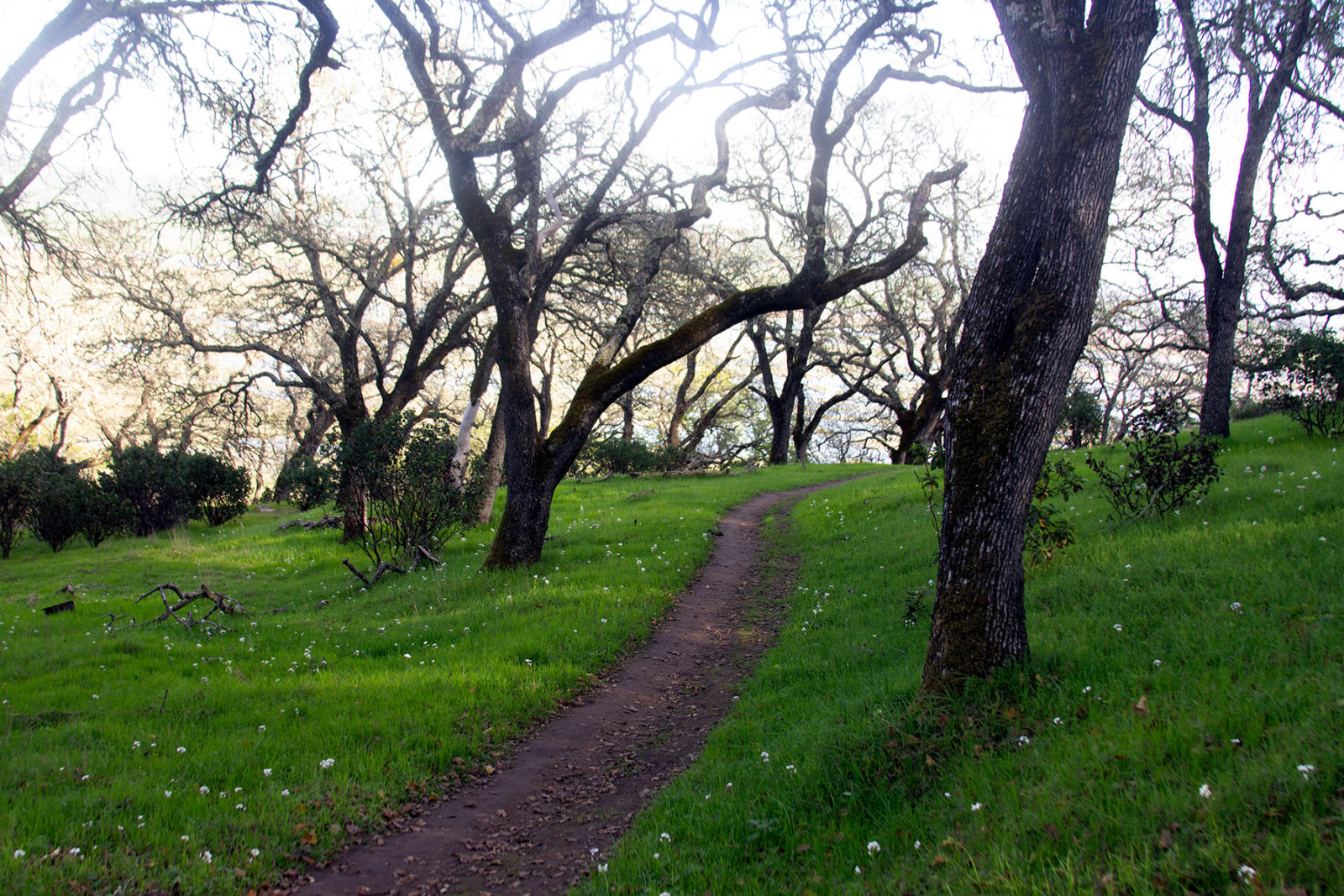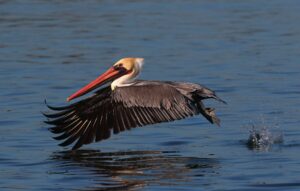The Olompali park manages to preserve the combined histories of the Coast Miwok, early ranchers, a hippie commune, and, briefly, local music legends, all on 700 acres of oak woodlands, grasslands, and chaparral in Marin County.
A walk through the park’s grounds and picnic area is like walking through time: there’s a visitors’ center with a small room of relics from the site’s past, historic ranch buildings, including a dairy and a blacksmith, and a large fountain made of rock from the Victorian era. For several weeks in the spring of 1966, the Grateful Dead lived on the former ranch, bringing other Bay Area musical talent there to jam. The back cover of their 1969 album Aoxomoxoa features a photo taken in front of a live oak on the property.
Amid the historic buildings, you’ll also find small structures made from redwood bark leaning in a cone shape. Coast Miwok descendants helped re-create these kotchas starting in 1994, bringing a reminder that the significance of Olompali to people originated long ago. Before the 1969 fire, before the bands, before a commune lived here, before the mission system and ranching, Olompali was one of the largest Miwok settlements in the area and was also a trading center.
You can learn about the storied past of the site at the free-admission visitors’ center, from the plentiful interpretive signs by each structure and in the native plant garden, from the preservation, restoration, and education group Friends of Olompali, or by watching the 2018 documentary Olompali: A Hippie Odyssey.
The native plant garden by the reconstructed Miwok kotchas highlights species important to the Coast Miwok. Clint Kellner, a PhD in ecology who led, with others, the effort to create the ethnobotanical garden, says the garden offers a good way to “think about how the Indigenous people used the plants there.”
The Coast Miwok of Olompali used soaproot bulbs for food, soap, and stunning fish and the bulb’s fibers as a brush. According to Friends of Olompali, the tribe employed plants for just about everything, including food, medicine, housing, weapons, boats, nets, and clothing.

Much of the park can be explored on foot or horseback. The Olompali Trail is a 2.5-mile loop; if you’re looking for a more substantial route, turn off the loop to the Upper Mount Burdell Trail. The summit of Mount Burdell stands at 1,558 feet, a round trip of about 9 miles.
As you climb, you’ll find a stone wall hand-laid by Chinese laborers between the 1870s and ’80s and, in the spring and summer, wildflowers, including Indian paintbrush and the rare Napa false indigo. Then, as the coast live oaks, manzanita, and other trees covering most of the trail periodically open up, you can look down at the views. There below you see the modernity of Highway 101, buildings from the ’60s and earlier, and evidence of a long history of the first people to live in what is now Marin County.





